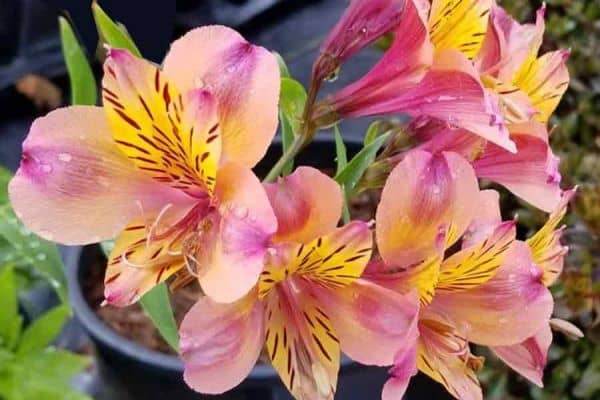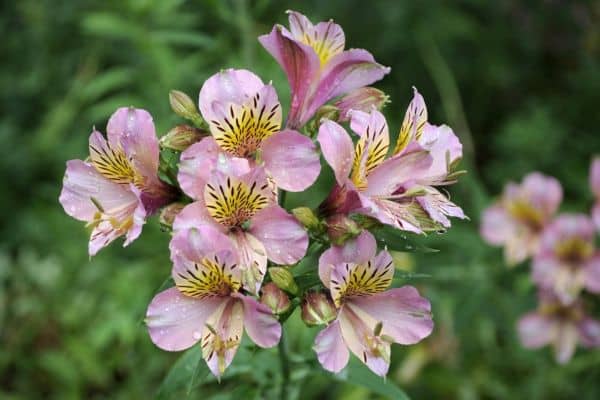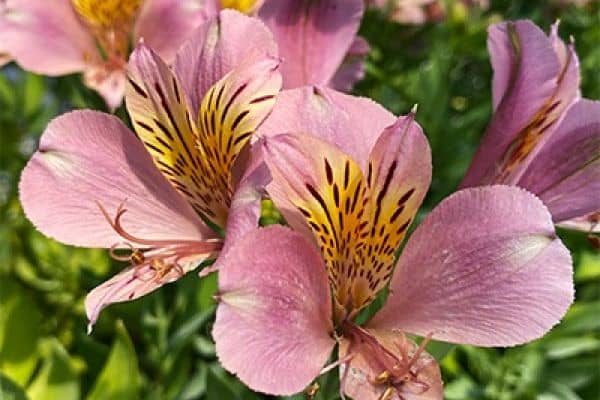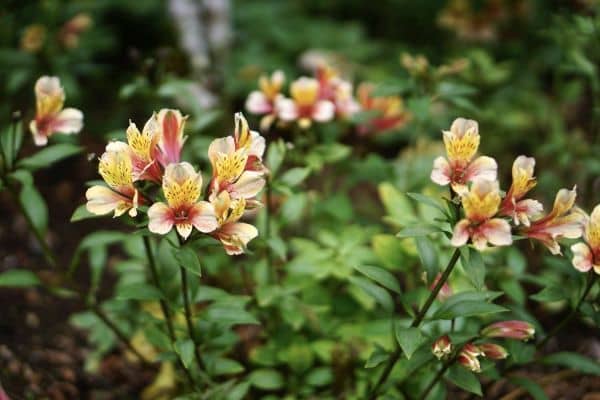If you are looking for a perfect flower for your garden or yard to grow this summer, then Peruvian Lilly would be an ideal choice. This follower Peruvian Lilly is perfect for your garden because they are versatile and can grow in all localities and also they come in a wide range of different unique colours. The flowers they produce can last up to two to three weeks as cut flowers in a vase.
This plant originated from South America widely known as the ‘Peruvian Lily’ or ‘Lily of the Incas’. This plant is named after a Swedish baron, Claus von Alstromer, who brought the seeds back to Europe in the mid-1700s.
- Common name: Peruvian Lily, Lily of the Incas; princess lily
- Scientific name: Alstroemeria spp.
- Family Background: Alstroemeriaceae
- Size: 1–3 ft. tall, 1–2 ft. wide
- Flower Color: Pink, orange, red, yellow, white, purple
So, in this article, we will talk Step-by-step about planting, growing, and caring for alstroemeria aka Peruvian lily.
Planting
The best time to plant Peruvian Lilly is in the spring when the soil temperature reaches around the degree of 60°F (15°C). While choosing the location, plant your flower in a sunny location for the proper growth and location. You can plant Peruvian Lily by Planting it from Tubers and By planting from Seeds.
1. Planting from Tuber:
Peruvian Lilly can be planted from Tuber, gently hold the tubers, as they can be breakable. With the proper calculation dig the holes 6-8 inches deep and make a space between 24 inches. If you are using heavy clay soil, then make sure to add some grit to the planting hole to improve the drainage. After the pot and soil work, place the tuber in the dug holes with the point side facing up. After you are done with the placing cover the tuber with the soil and lightly tamp it down.
2. Planting from Seeds:
You can also plant Peruvian Lilly with the seed, before planting the seed you must soak it for 12 hours at room temperature. If you are ready for the planting, dig the soil for about 1/4 inch in a sterile potting mixture. After sowing keep it in a cold location for months, after the cold treatment is done, locate the container in a warm place with indirect sunlight until seedings start to sprout. After you see the plants have developed their true leaves, plant them in a sunny location outdoors.

Caring
For healthy body growth, we need to take proper care of our body in the same way for the better growth of our plants, Peruvian lily you need to take care of it
- Light: Peruvian lily plants need full sun lights, So, place the plant 6-8 hours of direct sunlight daily. Place the plant in a proper direction from where it can receive full light daily. So place it where the plants can get 6-8 hours of sunlight daily. But if you live in a hot area, place the Peruvian lily plant in a shaded area in the afternoon to prevent the scorching of flowers.
- Watering: Watering is the main key point, to keep the plants healthy but overwater can cause root rot. This plant’s Peruvian Lily prefers moist, especially in summer temperatures soil but not waterlogged. After the soil starts to dry out water deeply but avoid letting the soil dry out completely it can stress the plants.
- Soil: For the best growth of the plants, you must have nutritious soil, where drainage is essential. This plant Alstroemeria needs proper well-drained soil to prevent root rot. Generally the soil of this plant, pH should be slightly acidic, ranging from 5.5 to 6.5.
- Fertilizer and Mulching: Use a balanced flower fertilizer for proper growth, one feeding in the early spring will result in the best Alstroemeria for the growing seas. To produce more flowers, A steadier stream of nutrition (every two weeks) is the most important. Some other organic additives like manure and compost tea will also be the best. Also, you can use a water-soluble fertilizer for container plants. As this plant needs the most, apply a layer of organic mulch around the base areas of the plant to maintain moisture in the soil, suppress weeds, and regulate soil temperature.
- Pruning: To maintain the health of the plants and to make them more aesthetic trim back any dead or yellowing foliage of the Peruvian lilies. When the plants start to spring too much, pull up less productive stems to encourage younger plants from newly formed tubers to flourish.

Types
Over 150 species of alstroemeria are found, but only a handful are commonly cultivated. Here are some of the popular types of alstroemeria (Peruvian lily) found in our localities.
1. Alstroemeria ‘Inticancha
Alstroemeria ‘Inticancha’ is mostly found in our localities, these plants produce large, vibrant blooms in a variety of colors that include, pink, orange, yellow, purple, and white. These plants have speckled or striped markings on the petals. Alstroemeria ‘Inticancha is suitable for both, indoor and outdoor plants.
2. Alstroemeria ‘Olympic
Alstroemeria ‘Olympic is better known for its tall stature, however, these plants can be reached up to the height of 4 feet, these plants are large and come in a wide range of colors, pink, orange, yellow, purple, and white. This flower, Alstroemeria ‘Olympic blooms mostly in the summer, typically from early June to late August.
3. Alstroemeria ‘Little Lucy’:
This plant is the perfect choice for container growth or for smaller gardeners, these plants can only grow up to the inches of 12-18 inches tall and produce clusters of small, brightly colored blooms in shades of pink, orange, yellow, and red.
4. Alstroemeria ‘Psittacina’
This plant, Alstroemeria ‘Psittacina’ is also better known as Parrot Lilly, which is very unique like its name, orchid-like blooms. This plant comes in a variety of colors, like orange, yellow, red, and purple.
6. Alstroemeria ‘Princess’
Alstroemeria ‘Princess’ has an elegant and sophisticated look. This plant, flowers are typically large and doubles-flowered with a soft ruffled texture. This plant’s flower blooms in different colors pink, lavender, white, and yellow.

Toxicity
The alstroemeria-Peruvian Lilly plant is also considered mildly toxic to humans and pets but not dangerous as as true lilies. However, the toxin in this plant is called tulipalin A which can cause illness, skin irritation, or stomach upset if ingested. So this should not be consumed by any humans or animals.
FAQs
Q. Are alstroemeria (Peruvian lily) safe to eat?
No, the plant is not safe to eat because it contains, Tulipali A which is harmful if we consume it.
Q. What can cause Root Rot in alstroemeria (Peruvian lily)?
Several factors can cause root rot including Over-watering, Poor Drainage, Planting Too Deep, Container Issues, Fungal Pathogens, and Planting in Cold, Wet Soil can cause Root Rot in alstroemeria (Peruvian lily)
Q. Should I water my alstroemeria daily?
This plant prefers moist soil but avoids soggy soil. So water this plant with about an inch of water per week also, when the toil layer of the soil feels dry you can water the plants.
Q. What is the family background of alstroemeria (Peruvian lily)?
The family background of alstroemeria (Peruvian lily) is Alstroemeriaceae
Also Read: Plumosa Fern: How to Grow and Care for This Unique Houseplant
